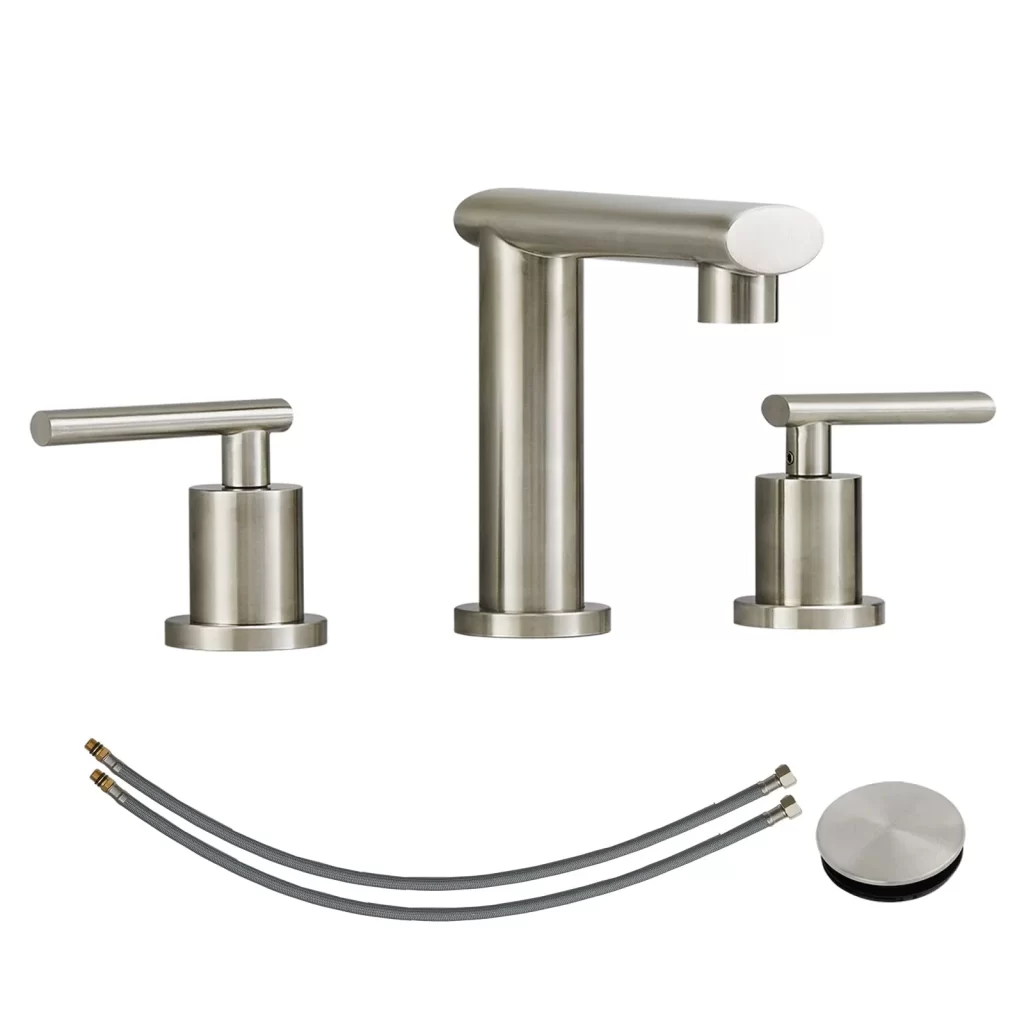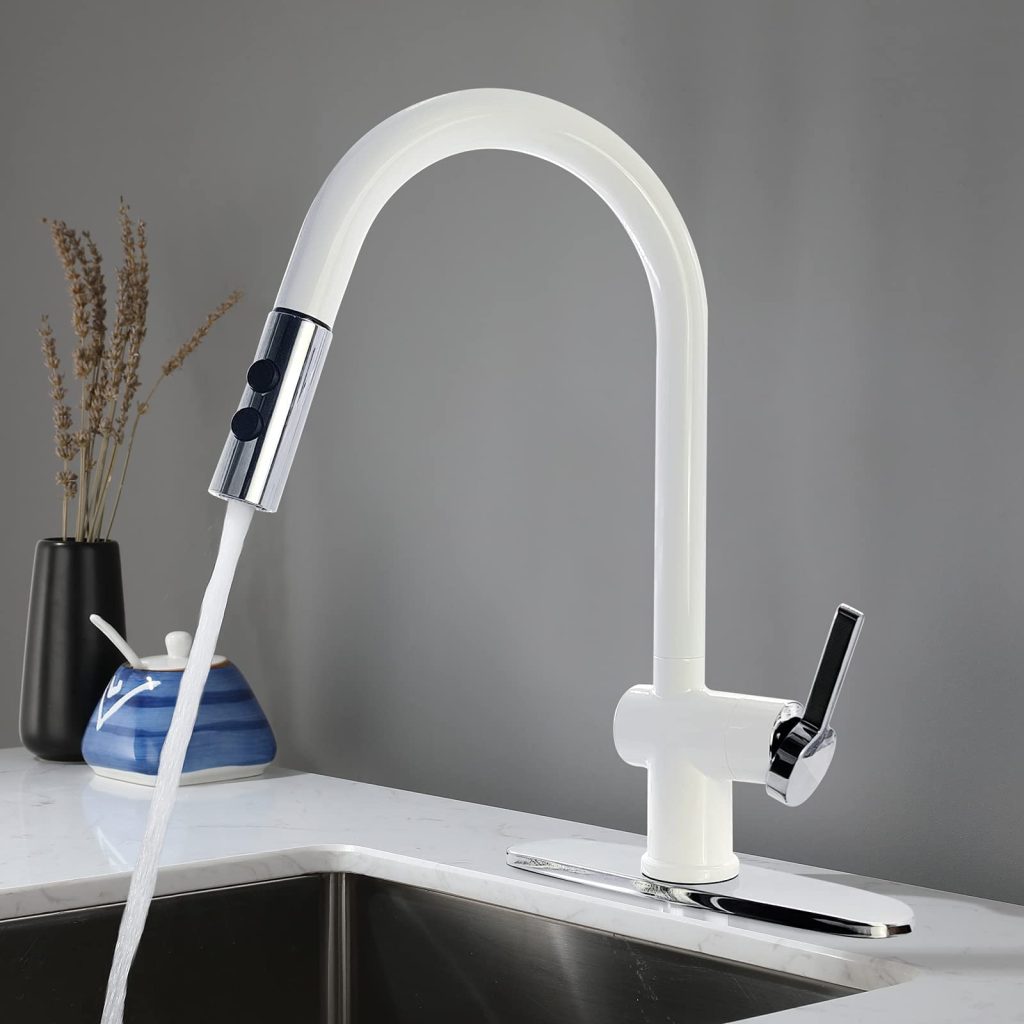How to get lime build up off faucets? Lime build-up on faucets can be both unsightly and frustrating. Over time, minerals in the water can form a stubborn layer of limescale, causing faucets to lose their shine and potentially affecting their functionality. Fortunately, there are effective methods and techniques to remove lime build-up and restore your faucets to their original condition. In this comprehensive guide, we will explore step-by-step procedures for removing lime build-up, using common household ingredients and commercial cleaners, and implementing preventive measures to avoid future build-up. Let’s dive into the world of faucet maintenance and learn how to tackle lime build-up effectively.

Assess the Lime Build-Up:
Before proceeding with any cleaning method, it’s important to assess the severity of the lime build-up on your old bathtub faucets. Determine if the build-up is light, moderate, or heavy by inspecting the surface for white or chalky deposits. Understanding the degree of build-up will help determine which cleaning method is most suitable.
Vinegar Solution Method:
Vinegar, specifically white vinegar, is a widely used household ingredient for removing lime build-up due to its natural acidity. Follow these steps to remove lime build-up using a vinegar solution:
- Mix equal parts white vinegar and warm water in a bowl or bucket.
- Soak a clean cloth or sponge in the mixture and wring out the excess liquid.
- Wrap the cloth or sponge around the affected areas of the faucet, ensuring the limescale is fully covered.
- Leave the vinegar solution in place for about 30 minutes, allowing the acidity to loosen the lime deposits.
- Use a scrub brush or an old toothbrush to gently scrub away the loosened build-up.
- Rinse the faucet thoroughly with clean water and dry with a soft cloth.
Lemon Juice Method:
Lemon juice, with its natural acidic properties, is another effective solution for removing lime build-up. Follow these steps to use lemon juice to clean your faucets:
- Squeeze fresh lemon juice into a bowl or cup.
- Dip a clean cloth or sponge into the lemon juice, making sure it is thoroughly saturated.
- Apply the lemon juice-soaked cloth to the affected areas of the faucet, making sure the build-up is fully covered.
- Allow the lemon juice to sit on the lime deposits for approximately 30 minutes.
- Gently scrub the surface with a brush or toothbrush to remove the loosened build-up.
- Rinse the faucet with clean water and dry thoroughly with a soft cloth.
Commercial Lime Removers:
Commercial lime removers are readily available and can provide effective solutions for stubborn lime build-up. Follow the instructions provided on the product packaging for optimum results. Ensure the product is suitable for use on your specific type of faucet material and always wear protective gloves and goggles when using chemical cleaners.

Prevention and Maintenance:
Preventive measures can help minimize future lime build-up and keep your faucets looking clean and shiny. These measures include:
- Wiping down the faucet regularly after each use to remove any water or residue.
- Using a damp cloth or sponge to remove any visible deposits or stains.
- Regularly cleaning the aerator or the faucet’s head attachment to prevent clogs and promote proper water flow.
- Installing a water softener or filtration system to minimize the minerals in the water that contribute to lime build-up.
- Applying a thin layer of car wax or clear nail polish to the faucet’s surface to create a protective barrier against mineral deposits.
What are the advantages of faucets?
Faucets are an integral part of every household, offering convenience, functionality, and style. They provide access to clean water for various tasks, including cooking, cleaning, and personal hygiene. Beyond their basic function, copper faucets offer several advantages that enhance daily life.
Water Conservation:
One of the primary advantages of modern faucets is their ability to conserve water. Faucets equipped with water-saving features, such as aerators and flow restrictors, help reduce water consumption without compromising functionality. These features introduce air into the water stream, maintaining adequate water pressure while reducing water usage. Water conservation not only benefits the environment by preserving this precious resource but also leads to lower utility bills.
Ease of Use:
Faucets are designed with ease of use in mind, providing intuitive controls and ergonomics. Single-lever faucets, for example, offer effortless temperature and water flow adjustment with a single handle. Touchless or motion-activated faucets eliminate the need to touch the handles, promoting hygiene and reducing the spread of germs. The ease of use offered by modern faucets enhances convenience and simplifies daily tasks in the kitchen, bathroom, or laundry room.

Ergonomic Design:
The ergonomic design of faucets focuses on user comfort and convenience. Faucet handles are designed to fit comfortably in the hand, allowing for easy grip and control. Extended spouts or pull-out sprayers provide flexibility and reach in multiple sink applications. Additionally, the height and positioning of faucets can be adjusted to accommodate various user needs and sink configurations, further enhancing the ergonomic experience.
Improved Hygiene:
Hygiene is a significant advantage of modern faucets, especially those equipped with touchless or motion-activated features. These faucets eliminate the need to touch potentially contaminated handles, reducing the spread of bacteria and viruses. Touchless faucets also promote efficient handwashing by activating the water flow when hands are detected, ensuring proper hygiene practices are followed consistently.
Technological Advancements:
Advancements in technology have made outdoor faucets smarter and more efficient. Smart faucets can be operated through voice commands, smartphone apps, or home automation systems, adding convenience and customization to your daily routine. Some smart faucets also offer features like water temperature control, precise water measurements, and preset modes for different tasks. These technological advancements simplify and enhance the overall user experience.
Durability and Longevity:
Modern faucets are built to withstand daily use and are made from high-quality materials such as stainless steel, brass, or durable composite materials. These materials provide enhanced durability, resistance to corrosion and stains, and longevity. Investing in a well-built faucet ensures long-term performance, reducing the need for frequent replacements and maintenance.
Aesthetics and Style:
- Faucets are not only functional but also contribute to the overall aesthetics of a space. They come in a wide range of styles, finishes, and designs, allowing homeowners to customize their decor and express their personal style. From classic and traditional to sleek and modern, faucets serve as focal points in kitchens and bathrooms, enhancing the visual appeal and adding a touch of elegance to any space.
- Faucets offer numerous advantages that improve our daily lives in significant ways. From conserving water and promoting cost savings to providing ease of use, ergonomic design, improved hygiene, and technological advancements, faucets are an essential fixture for modern living. Their durability, longevity, and ability to enhance the aesthetics of your home make them a worthwhile investment.

Conclusion:
Removing lime build-up from faucets is an essential task for maintaining their appearance and functionality. Whether using natural solutions like vinegar or lemon juice, or opting for commercial lime removers, the step-by-step methods outlined in this guide provide effective solutions for tackling lime build-up on faucets. Remember to choose the method that best matches the severity of the build-up and the materials of your faucets. By implementing preventive measures and performing regular maintenance, you can minimize future lime build-up and keep your faucets clean and shiny. With these techniques and a little effort, you can restore the beauty and functionality of your faucets, ensuring long-lasting performance and an enjoyable user experience.
